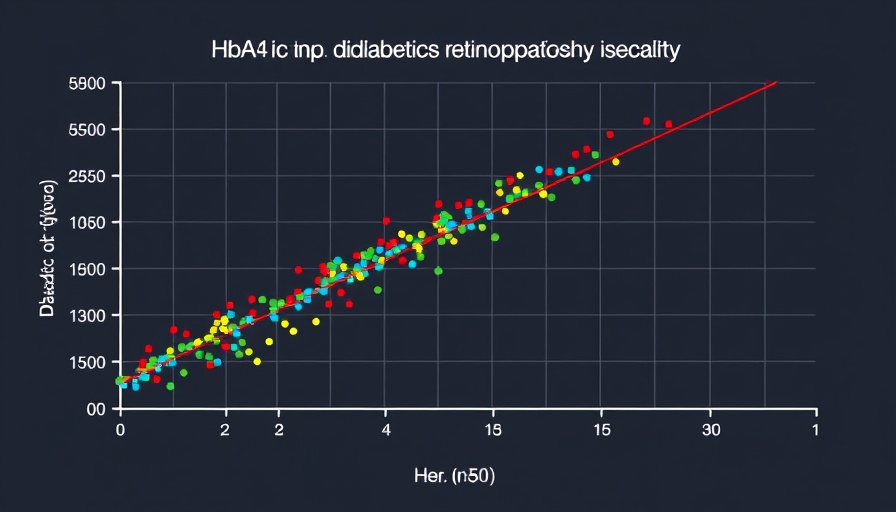
Understanding the Inverted U-shaped Relationship Between HbA1c and Diabetic Retinopathy
Recent research reveals a complex relationship between HbA1c levels and diabetic retinopathy (DR)—one marked by an inverted U-shape. This means that both low and high HbA1c levels could be associated with an increased risk of developing DR, while moderate levels may correlate with a reduced risk. For those living with diabetes, this finding presents pivotal insights into managing their condition and understanding their ocular health.
The Significance of HbA1c in Diabetes Management
HbA1c, or glycated hemoglobin, serves as a critical marker for long-term blood sugar control in patients with diabetes. Traditionally, higher HbA1c levels indicate poorer control, leading to various complications, including diabetic retinopathy. However, evidence suggests that extremely low HbA1c might also be harmful, potentially due to factors like severe hypoglycemia.
Contrasting Perspectives on Diabetes Control
This research challenges conventional wisdom, which predominantly associates higher HbA1c with increased risk for complications like DR. By emphasizing the dual risks associated with both extremes, it invites healthcare providers and patients to reconsider how they approach diabetes management. Could the focus solely on lowering HbA1c be misleading?
Future Predictions: A Shift in Clinical Practice
As researchers delve deeper into the implications of this inverted U-shaped relationship, it is likely that clinical practices will evolve. Healthcare professionals may need to adopt a more tailored approach to HbA1c management, aiming for a balanced glucose control strategy. This could include tailored treatment plans that consider the patient's entire health profile rather than solely focusing on HbA1c numbers.
Actionable Insights on Diabetes Management
For individuals living with diabetes, the findings underscore the importance of understanding one’s unique blood glucose patterns rather than purely chasing lower HbA1c levels. Implementing regular check-ups and engaging in continuous dialogue with healthcare providers about personal health goals can foster more effective diabetes management strategies.
Public Health Implications
This research not only has implications for individual health management but also for public health policies. As awareness grows about the consequences of both low and high HbA1c, diabetes education programs might need to adapt their curricula to better inform patients about the nuances of their treatment options.
Conclusion: Emphasizing Balanced Approach
Understanding that an inverted U-shaped relationship exists between HbA1c levels and diabetic retinopathy empowers both patients and clinicians to adopt a more holistic approach to diabetes management. By focusing on maintaining balanced glucose levels and prioritizing patient education, the healthcare community can work towards reducing the incidence of diabetic retinopathy and enhancing the quality of life for those affected by diabetes.
 Add Row
Add Row  Add
Add 




Write A Comment